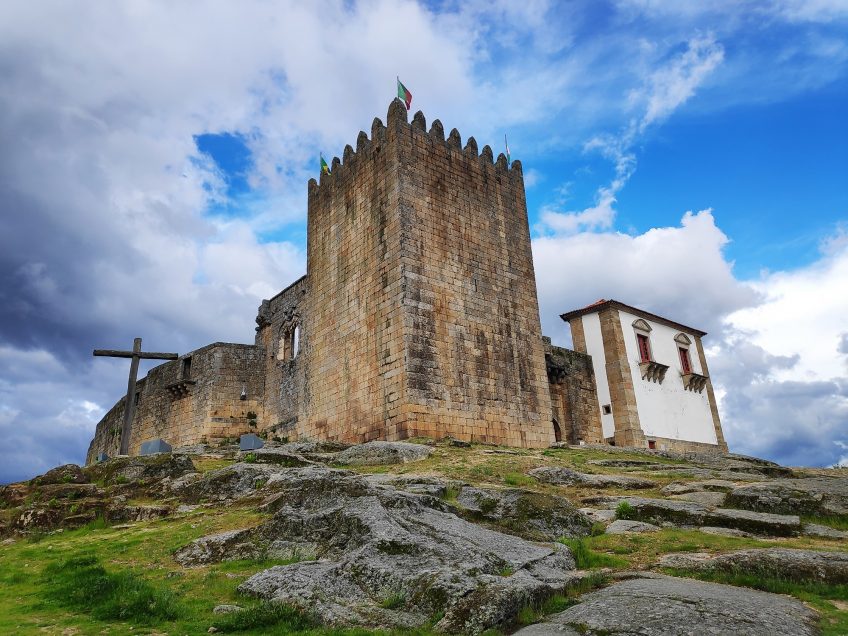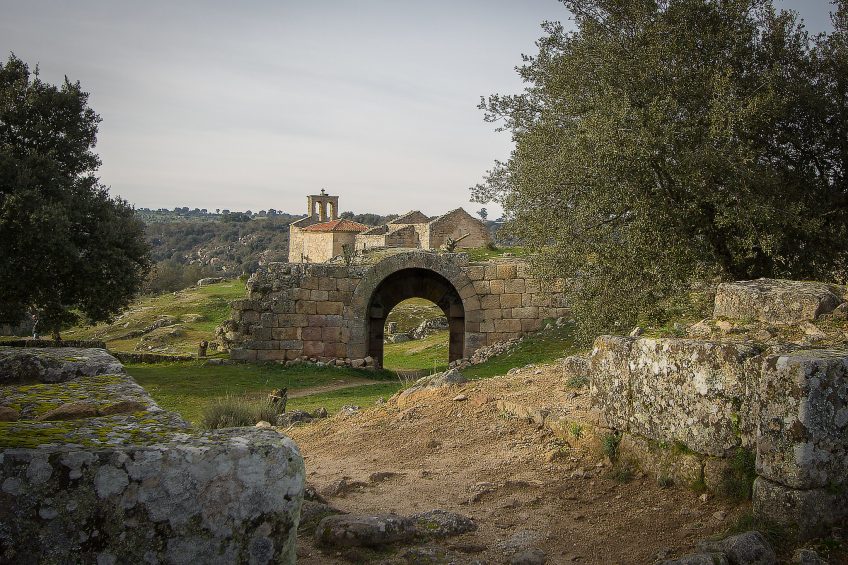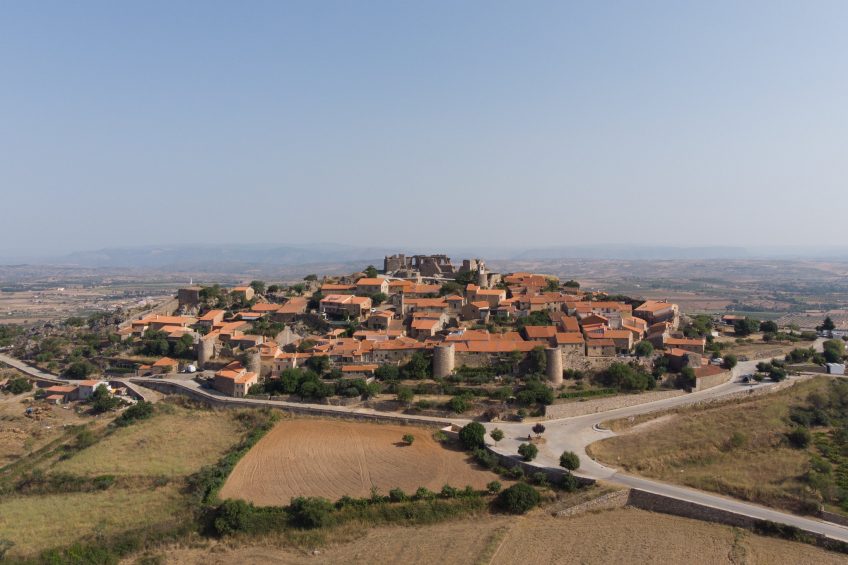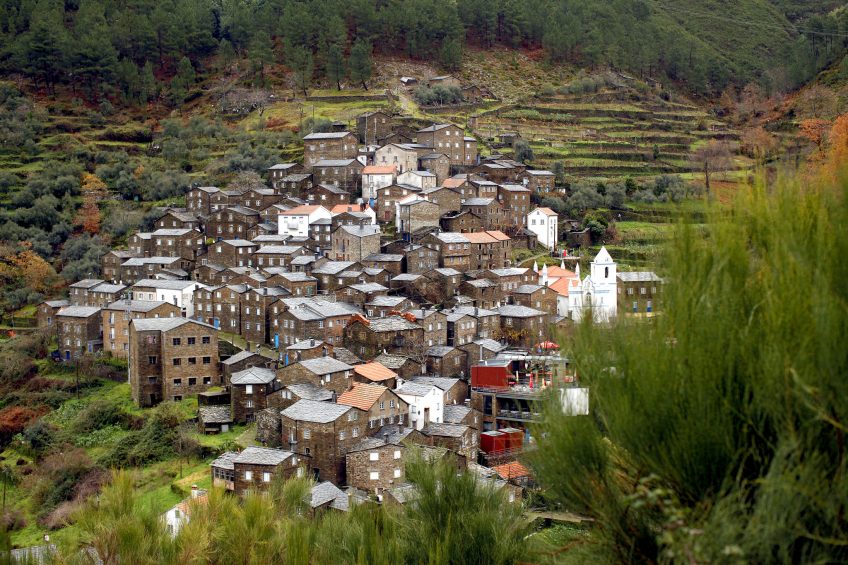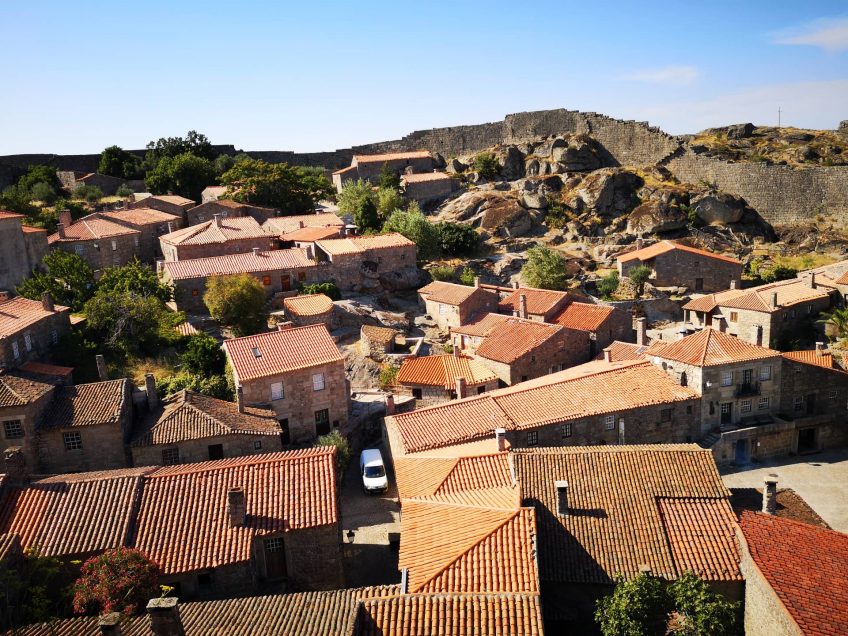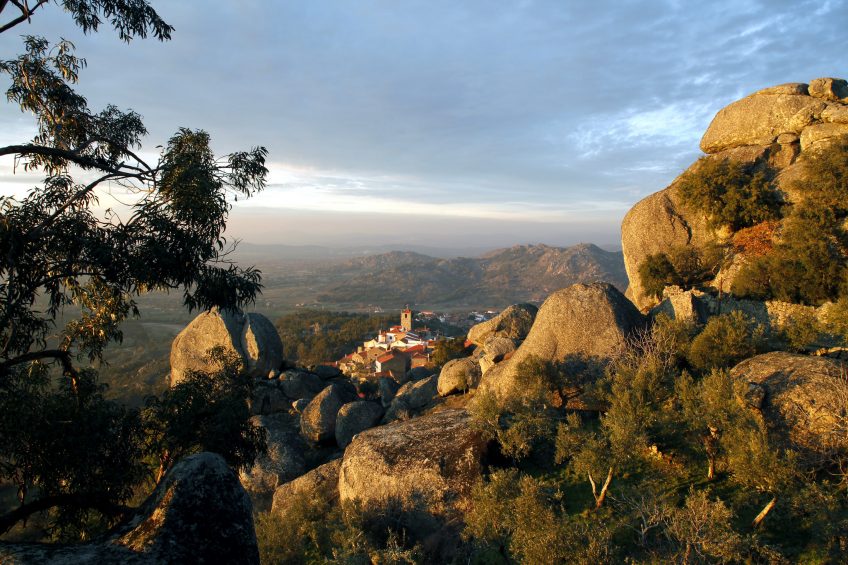
Portugal’s 12 Historic Villages (Aldeias Históricas de Portugal) are cultural treasures scattered mainly across the Beira Interior region of Central Portugal. This official program, launched in 1991, aimed to restore and preserve these ancient villages, many existing since Roman times, and which played a crucial role in defending Portugal’s borders over centuries. Visiting these villages is like stepping back into Portugal’s medieval past, discovering stone castles, ancient churches, medieval walls, and unique traditions born of their rugged histories.
Overview of The 12 Historic Villages
Most of these villages lie tucked near the Spanish border in the Guarda, Castelo Branco, and Coimbra districts. They vary from fortified towns to tiny mountain hamlets. The official 12 Historic Villages include:
-
Almeida
-
Belmonte
-
Castelo Mendo
-
Castelo Novo
-
Castelo Rodrigo
-
Idanha-a-Velha
-
Linhares da Beira
-
Marialva
-
Monsanto
-
Piódão
-
Sortelha
-
Trancoso
1. Almeida – The Fortress Star Town
Almeida impresses with its historic star-shaped fortress, built in the 17th century to defend Portugal from Spanish invasions. The fortress has six bulwarks and six ravelins, demonstrating advanced military architecture of its time.
Unique Monuments & Traditions:
-
The Fortress Walls and star-shaped layout are its main architectural features.
-
Medieval gates and barracks can still be explored.
-
Almeida holds vibrant celebrations commemorating its role in the Portuguese Restoration War, highlighting local military traditions and folk dances.
-
The town’s location close to the Spanish border adds to its rich history of border conflicts and cultural blending.
2. Belmonte – The Jewish Heritage Village
Belmonte is famous for its historic Jewish community, which preserved its traditions secretly for centuries, especially during periods of persecution.
Unique Monuments & Traditions:
-
Jewish Museum of Belmonte showcasing the history of Sephardic Jews.
-
The Belmonte Castle, a 13th-century fortress with Romanesque features.
-
Annual events like the Festa dos Estaleiros, a folk festival celebrating regional traditions.
-
Traditional craftmanship like leatherwork and wool weaving.
-
The community follows Jewish customs preserved from medieval times, reflecting resilience and cultural preservation.
3. Castelo Mendo – Medieval Gateways and Pillory
Known as a tiny but enchanting village, Castelo Mendo carries the imprint of Bronze Age and Roman occupations.
Unique Monuments & Traditions:
-
The 12th-century castle ruins and multiple medieval gates including Porta do Sol and Porta da Guarda.
-
One of the tallest pillories in Central Portugal (~7 meters high, 16th century).
-
Church of Nossa Senhora do Castelo, a Romanesque church enlarged in later centuries.
-
The village celebrates religious festivals rooted in rural traditions with processions and local gastronomy.
4. Castelo Novo – A Gateway to History
Castelo Novo was founded during the Middle Ages and is noted for its defensive walls and traditional granite houses.
Unique Monuments & Traditions:
-
Medieval walls and towers offering panoramic views.
-
Annual medieval fairs showcasing crafts, music, and agro-food products.
-
A network of rural paths around the village encourages hiking and nature exploration.
-
Traditional shepherding and farming customs remain integral to local life.
 5. Castelo Rodrigo – Fortified Walls and Romanesque Churches
5. Castelo Rodrigo – Fortified Walls and Romanesque Churches
Castelo Rodrigo is nestled among hills and has a rich defense history.
Unique Monuments & Traditions:
-
The 13th-century Church of Nossa Senhora do Reclamador featuring decorated ceilings.
-
Ruins of a barbican from the 14th century and well-preserved pillories.
-
The medieval Convent of Santa Maria de Aguiar.
-
Local festivals celebrate religious and agricultural cycles with folk dances and community meals.
6. Idanha-a-Velha – The Ancient Roman and Medieval Crossroads
Idanha-a-Velha dates back to Roman times and was once a capital of a Roman civitas.
Unique Monuments & Traditions:
-
The Roman epigraphs and ruins found throughout the village, including a 4th-century Roman bridge.
-
The ruined cathedral of Santa Maria, rich in medieval architecture.
-
The village hosts cultural events around Roman and medieval heritage.
-
Ancient traditions linked to river life and agriculture are still celebrated.

7. Linhares da Beira – A Fortress Village in the Mountains
One of the smallest and most remote historic villages.
Unique Monuments & Traditions:
-
The 12th-century castle with towers and gates.
-
The Church of Misericórdia, a Romanesque church with an ornate portal.
-
Annual events celebrate the village’s religious heritage with processions, traditional music, and dance.
-
Farming and pastoral life traditions preserved fiercely due to geographic isolation.
8. Marialva – Home to a Majestic Medieval Castle
Marialva stands on a hill with sweeping views and a castle dating from before Roman times.
Unique Monuments & Traditions:
-
One of Portugal’s most beautiful medieval castles with walls and towers.
-
Religious heritage sites such as chapels and ruins of ancient monasteries.
-
Folk festivals celebrating harvest and religious occasions.
-
Traditional artisanal crafts and ancient farming techniques are highlighted in village fairs.
9. Monsanto – The Most Portuguese Village in Portugal
Famous for its unique granite boulder houses built into and around large rocks.
Unique Monuments & Traditions:
-
The Templar castle at the village summit.
-
Narrow pathways and traditional granite houses.
-
Known for its designation as “The Most Portuguese Village” celebrating Portuguese heritage.
-
Hosts medieval fairs, traditional music festivals, and regional gastronomy events.
10. Piódão – The Blue-Door Schist Village
Piódão is renowned for its schist stone houses with distinctively painted blue doors and windows.
Unique Monuments & Traditions:
-
Mother Church of Nossa Senhora da Conceição (17th century) and other historic chapels.
-
The village layout resembles a “nativity scene,” earning its nickname.
-
Handicrafts like wool weaving, and traditional mountain farming.
-
Local festivals centered on religious observances and nature, including hikes to nearby waterfalls and river beaches.
11. Sortelha – One of Portugal’s Oldest Villages
Sortelha is a legendary village with over 800 years of history.
Unique Monuments & Traditions:
-
Imposing medieval castle and town walls.
-
Romanesque churches and a medieval pillory.
-
Traditional rural festivals with music, dance, and gastronomy.
-
The village preserves medieval traditions including artisan crafts and folk customs.
12. Trancoso – A Historic City with a Medieval Heart
The only city on the list, Trancoso has a historic center enclosed by medieval walls.
Unique Monuments & Traditions:
-
Preserved medieval castle and Jewish quarter.
-
Religious buildings like the Church of São Pedro and various chapels.
-
Home to the mausoleum of the prophet Bandarra, a local cultural icon.
-
Festivals blend religious pageantry with medieval reenactments, music, and food.
Experiencing Portugal’s Historic Villages
Visiting these villages offers a deep dive into Portugal’s history, medieval architecture, and vibrant rural traditions. From fortified castles that tell tales of battles and border defense, to ancient churches and convents rich with art and spirituality, each village is a unique testament to Portuguese heritage.
The villages also preserve local traditions linked to agriculture, crafts, and religious festivities that have survived through centuries in relative isolation, thanks to their mountainous and borderland locations.
Travelers can enjoy:
-
Exploring medieval gates, towers, and pillories.
-
Sampling local gastronomy rooted in centuries-old recipes.
-
Witnessing traditional festivals with music, dance, and religious processions.
-
Hiking mountain trails that connect rustic villages and nature spots.
-
Meeting village artisans and learning about crafts like wool weaving, leatherwork, and pottery.
Practical Tips for Visitors
-
Many of these villages are best explored by car due to their remote locations.
-
Accommodations range from quaint guesthouses to rural lodges offering authentic stays.
-
Hiring local guides can enrich the experience with historical context and storytelling.
-
The best times to visit are spring and autumn when festivals and cultural events are frequent and weather is mild.
-
Respect local customs and contribute to preserving these cultural gems through sustainable tourism.
Portugal’s 12 Historic Villages form a living museum of medieval and rural life, inviting travelers to explore a Portugal beyond its famous coasts — one of stone, tradition, and timeless charm.



